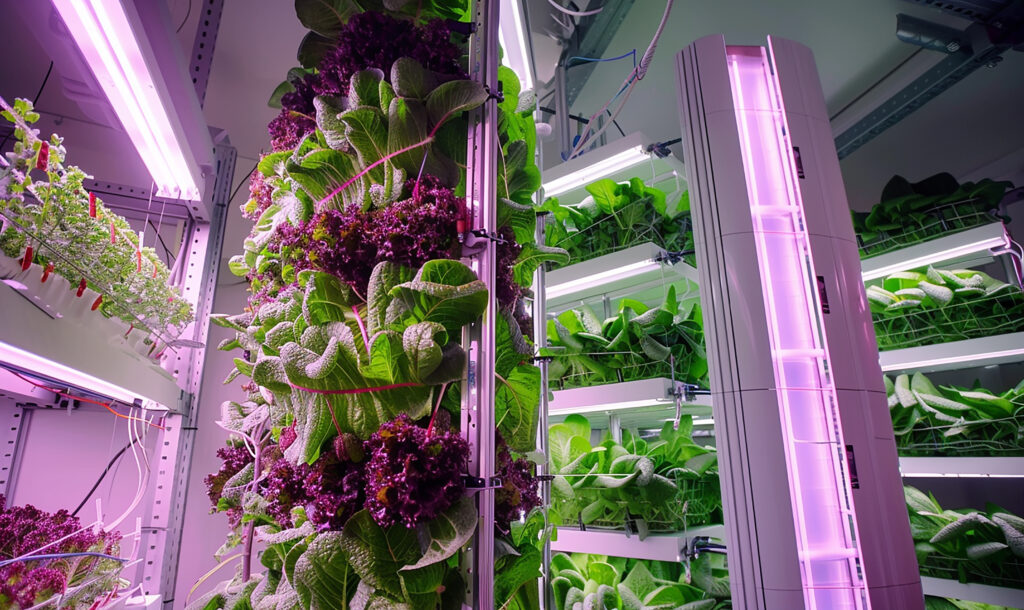LED grow lights have revolutionized indoor gardening, making it possible to grow lush, healthy plants year-round regardless of natural light conditions. This comprehensive guide will help you understand how to choose and use LED grow lights effectively for your indoor garden.
Understanding LED Grow Light Basics
LED (Light Emitting Diode) grow lights offer several advantages over traditional growing lights:
- Energy efficiency: Use up to 60% less electricity
- Lower heat output: Safer for plants and home
- Longer lifespan: Often lasting 50,000+ hours
- Customizable spectrum: Optimal light for different growing stages
Choosing the Right LED Grow Light
Key Factors to Consider
Light Intensity (PPFD) The amount of usable light reaching your plants is crucial for photosynthesis. Different plants require different intensities:
- Low-light plants: 100-300 PPFD
- Medium-light plants: 300-600 PPFD
- High-light plants: 600+ PPFD

Light Spectrum Modern LED grow lights typically offer:
- Blue light (400-500nm): Promotes vegetative growth
- Red light (600-700nm): Encourages flowering and fruiting
- Full-spectrum: Mimics natural sunlight
Types of LED Grow Lights
- Strip Lights
- Best for: Small setups and supplemental lighting
- Pros: Easy to install, affordable
- Cons: Limited coverage area
- Panel Lights
- Best for: Medium to large growing areas
- Pros: Even light distribution
- Cons: Can be costly for large spaces
- Spider-Style Lights
- Best for: Professional setups
- Pros: Excellent coverage and intensity
- Cons: Higher initial investment
Setting Up Your LED Grow Light System
Proper Positioning
Height and Coverage:
- Seedlings: 24-30 inches above plants
- Vegetative growth: 18-24 inches above plants
- Flowering stage: 12-18 inches above plants
Adjust based on:
- Plant light requirements
- Light intensity
- Signs of light stress
Creating an Effective Growing Space
Essential Elements:
- Reflective surfaces to maximize light
- Good air circulation
- Temperature control
- Humidity management
- Timer for consistent light cycles
Light Schedules for Different Plants
General Guidelines
Foliage Plants
- 12-16 hours of light daily
- 8-12 hours of darkness
- Consistent schedule important
Flowering Plants
- Vegetative stage: 16-18 hours light
- Flowering stage: 12 hours light
- Strict dark periods necessary
Common Indoor Plants and Their Light Needs
Herbs:
- Basil: 14-16 hours
- Mint: 12-14 hours
- Parsley: 12-14 hours
Vegetables:
- Lettuce: 12-14 hours
- Tomatoes: 14-16 hours
- Peppers: 14-16 hours
Maximizing LED Grow Light Efficiency
Energy-Saving Tips
- Use timers to automate schedules
- Position plants optimally
- Clean lights regularly
- Adjust height as plants grow
- Group plants with similar light needs
Troubleshooting Common Issues
Light Burn Symptoms:
- Yellowing leaves
- Crispy leaf edges
- Bleached spots Solution: Increase light height or reduce intensity
Insufficient Light Signs:
- Leggy growth
- Pale leaves
- Slow growth Solution: Decrease light height or increase intensity
Maintaining Your LED Grow Light System
Regular Maintenance:
- Dust lights monthly
- Check connections quarterly
- Monitor temperature regularly
- Verify timer accuracy
- Update light position as needed
Cost Considerations and ROI
Initial Investment:
- Quality LED lights: $100-500+
- Timer: $10-30
- Installation supplies: $20-50
Long-term Benefits:
- Reduced energy costs
- Year-round growing capability
- Increased plant health
- Extended growing seasons
LED grow lights are an invaluable tool for serious indoor gardeners. With proper selection, setup, and maintenance, they can transform any indoor space into a thriving garden environment. Remember to monitor your plants closely and adjust your lighting setup as needed to achieve optimal growing conditions throughout the year.




